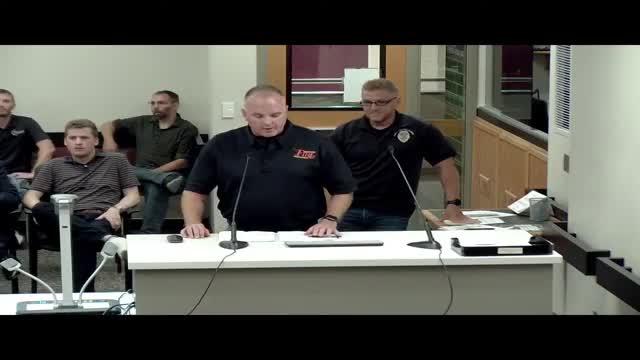Fire Department Tackles Alcohol Crisis with Innovative Program
August 20, 2024 | Rapid City, Pennington County, South Dakota
This article was created by AI summarizing key points discussed. AI makes mistakes, so for full details and context, please refer to the video of the full meeting. Please report any errors so we can fix them. Report an error »

In a recent government meeting, officials from the Rapid City Fire Department highlighted the significant impact of alcohol-related incidents on emergency services and community health. Since the end of 2020, the department has invested $1.2 million in salaries and dedicated 12,000 man-hours to address low acuity calls, primarily linked to intoxication.
Rapid City, with a population of approximately 80,000, experiences a staggering 21,388 emergency calls annually, with a notable portion stemming from alcohol use. The department has identified 50 high utilizers who generate at least 20 calls each month, underscoring the urgent need for intervention.
During a recent one-month period, the fire department responded to 171 EMS calls between 7:00 a.m. and 10:00 a.m., with 36 of those calls directly attributed to alcohol intoxication. This trend raises concerns about resource allocation and the safety of individuals with dangerously high blood alcohol concentrations (BAC), which can reach fatal levels.
To combat this issue, officials are advocating for a change in alcohol sale hours, proposing to push back the off-sale time to 10:00 p.m. This adjustment aims to provide caseworkers with additional time to engage with individuals struggling with addiction, ultimately reducing the frequency of emergency calls and improving community health outcomes.
The meeting underscored the collaborative efforts between the fire department and various local health organizations, emphasizing the importance of proactive measures in addressing the cycle of addiction and emergency service utilization.
Rapid City, with a population of approximately 80,000, experiences a staggering 21,388 emergency calls annually, with a notable portion stemming from alcohol use. The department has identified 50 high utilizers who generate at least 20 calls each month, underscoring the urgent need for intervention.
During a recent one-month period, the fire department responded to 171 EMS calls between 7:00 a.m. and 10:00 a.m., with 36 of those calls directly attributed to alcohol intoxication. This trend raises concerns about resource allocation and the safety of individuals with dangerously high blood alcohol concentrations (BAC), which can reach fatal levels.
To combat this issue, officials are advocating for a change in alcohol sale hours, proposing to push back the off-sale time to 10:00 p.m. This adjustment aims to provide caseworkers with additional time to engage with individuals struggling with addiction, ultimately reducing the frequency of emergency calls and improving community health outcomes.
The meeting underscored the collaborative efforts between the fire department and various local health organizations, emphasizing the importance of proactive measures in addressing the cycle of addiction and emergency service utilization.
View full meeting
This article is based on a recent meeting—watch the full video and explore the complete transcript for deeper insights into the discussion.
View full meeting